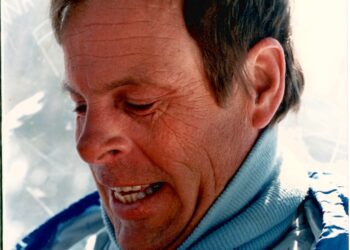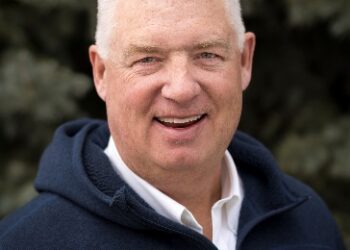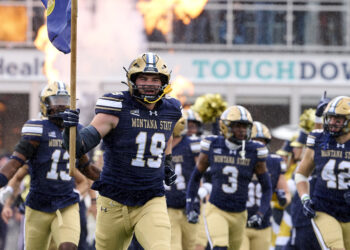By Ryan Strother EBS CONTRIBUTOR
GALLATIN GATEWAY—Just north of the Gallatin National Forest, the lines between the quilt of ranches, agricultural fields, and subdivisions in the southern Gallatin Valley are drawn by fences and roads—but on a drive under the cottonwoods, the question of who owns what, exactly, isn’t obvious. Elk, bears, mountain lions—the list goes on—pay little attention to which agency or owner manages any particular parcel.
But Holly Pippel knows who owns the land. Nearly every morning, Pippel gets up at dawn and tours the southern Gallatin Valley in her truck, coffee in hand, telephoto lens at the ready, usually still in her pajamas. If the lighting is good, she’ll photograph the wildlife: elk herds, bald eagle nests, bobcats. One of her field cameras recently snapped a shot of a snow-white ermine catching a mouse.
More than she shoots, though, she observes animals in the same way you get to know your neighbors. Everyone seems like a stranger before you see the same faces over and over again.
Pippel, who works full-time as a real estate agent, calls it a hobby. But it’s not without impact: once, she noticed a change in behavior in a pair of nesting bald eagles. One of the eagles sat lower in the nest than usual for a few days. She called a wildlife rehabilitator, who cared for the bird and released it back to the nest.
One morning, Pippel let me ride along with her for a morning drive. As we drove along the roads east of U.S. Highway 191, Pippel told me the elk travel across David and Deborah’s property, following open space and conservation easements to a usual point of crossing the highway on their trek to Ted Turner’s ranch on the west side of the highway. To the east of their usual thoroughfare, Pippel stops the truck adjacent to a field with a large herd of cow elk sitting in the snow.
Pippel tells me the elk used to cross here in large numbers, but since the installation of an aesthetic fence, the animals are frequently held up in this field. The previous owners of the property had the fence installed before putting the property on the market. An open gate in the fence line allows them to cross in theory, but a blind curve in the road prevents the elk from using the opening.
“I sat here when this first went up and watched 200 heads of elk get bottlenecked here at rush hour when Big Sky traffic came through. The elk were flipping over the fence because they couldn’t jump it because of the snowbanks. And it’s too tall,” Pippel said.
The new fence stopping the elk from crossing one the backroads here is a challenge for the herd’s mobility, but it’s a small obstacle compared to the landscape connectivity issues posed by the highway just a mile west. Increasing traffic and steady development have made it difficult for wildlife to pass freely through the valley, particularly where 191 bisects foraging grounds on Ted Turner’s ranch on the west side and the private lands on the east side.

This winter, the Gallatin Gateway elk herd began congregating in larger numbers at the mouth of the Gallatin Canyon, leading to increased winter collisions on Highway 191 and heightened public calls for infrastructure to mitigate the issue. Experts have made the case that permanent conservation easements, combined with crossing structures, like a wildlife overpass, could be a viable solution for increasing landscape connectivity and reducing wildlife-vehicle collisions.
Wildlife mortality increases as a direct result of collisions with cars, but that’s not the only challenge roads present for wildlife. Elizabeth Fairbank, a road ecologist for the Center for Large Landscape Conservation, makes the case that wildlife crossing structures are beneficial for more than just reducing wildlife-vehicle collisions.
Roads, she says, decrease habitat by decreasing landscape connectivity, and the amount of land wildlife can safely access. Even when collisions don’t occur, elk and other animals can be deterred from even attempting to cross the roads at all. Combined with challenges posed by development and fencing, moving around to find forage and water is becoming an increasing challenge for wildlife in the valley.
Landscape connectivity, she says, is paramount to the survival of wildlife.
“If you think about an animal’s lifespan, they’re going to need to be able to move daily between water, food, and cover,” Fairbank said. “Seasonally, especially a lot of the ungulates in the Rocky Mountains move between their winter and summer ranges.”
In the Greater Yellowstone Ecosystem, elk and other ungulates move from their summer ranges at higher elevations down to lower elevations in the winter, often near roads and other human infrastructure. But elk and deer aren’t the only animals having trouble crossing 191.
On Dec. 28, 2022, 13 wild bison were killed by a semi-truck 4 miles north of West Yellowstone. According to The Buffalo Field Campaign, an organization dedicated to protecting wild bison, a majority of collisions with bison on occur on a 7-mile stretch of road where Highway 191 crosses the Madison River a few miles north of West Yellowstone. The Buffalo Field Campaign has called for the Montana Department of Transportation to reduce speed limits and cited the 2021-2022 Infrastructure Investments and Jobs Act as a possible source of funding for a solution to the problem.
A section of the infrastructure bill designates $350 million in funding for wildlife crossings. According to the bill, more than a million wildlife-vehicle collisions occur every year in the United States—a figure that could actually be much higher. Experts say many collisions go unreported, and researchers estimate wildlife-vehicle collisions may be under-reported by as many as two-thirds in some cases. The bill estimates the cost of wildlife-vehicle collisions at $8.3 billion annually in the United States and explains the purpose of the funding is to increase landscape connectivity and reduce highway hazards for drivers.
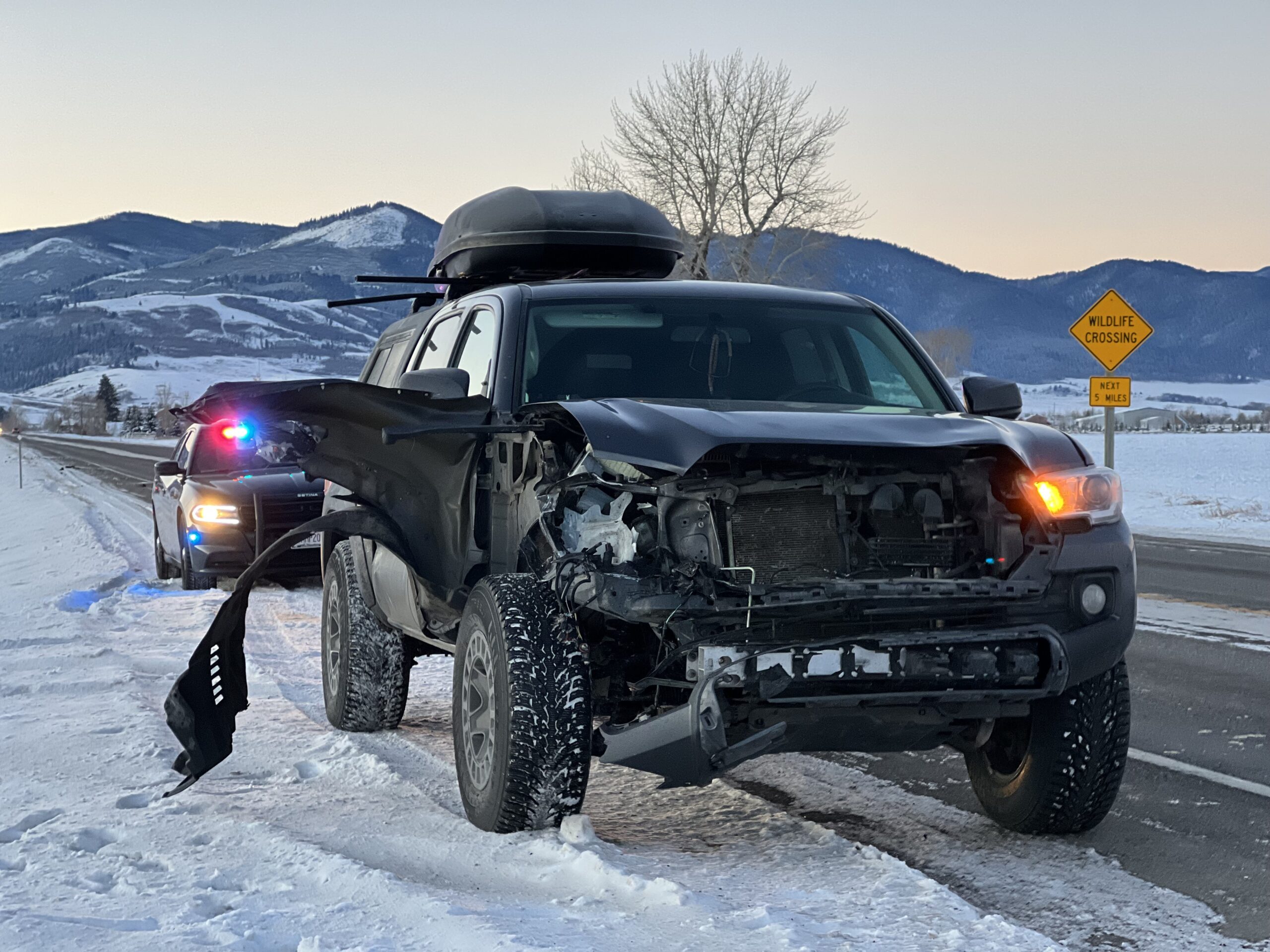
A national issue
Reporting from the Washington Post visualized the challenges faced by individual animals coming across highways, following a pronghorn moving across southwestern Wyoming. The pronghorn deftly avoid infrastructure, use existing wildlife cover, but is stopped in its tracks at Interstate 80 without a readily available means of crossing.
Wildlife crossing structures, like overpass bridges over highways, and underpasses tunneling under highway systems have been implemented with success in the United States. In 1975, the first wildlife bridge was installed near Beaver, Utah. Since then, over 60 wildlife crossings have been built in the state, and nearly every Western state has installed wildlife crossing structures.
About 100 miles west of Denver, an 11-mile stretch of Colorado Highway 9 was outfitted with wildlife crossings in 2016. The project includes two wildlife overpasses, five wildlife underpasses, 61 escape ramps, 29 wildlife guards and 10.3 miles of 8-foot-high wildlife fence.
According to the Colorado Department of Transportation, a five-year effectiveness study conducted after the project’s completion, some 112,678 mule deer successfully crossed the highway, representing 96% of the mule deer population utilizing the crossing structures.
Prior to the project, an average of 63 carcasses were recorded along the highway each winter, nearly all of which were mule deer. A final report issued by CDOT with the U.S. Department of Transportation and the Federal Highway Administration, stated the wildlife crossings and fencing mitigation helped decrease wildlife-vehicle collisions by 92%, and roadside carcasses decreased by 90% prior to construction.
In Montana, wildlife crossing structures have also been implemented with success. On U.S. Highway 93, between Evaro and Polson, a reconstruction project added wildlife crossings at 39 locations, along with fencing and jump-outs. The project, located on the Flathead Indian Reservation, required tribal land to rebuild highway. The Confederated Salish and Kootenai Tribes pushed the government to increase safety along the roadway and reduce animal collisions.
A follow-up study reported an overall increase in wildlife collisions along the entire corridor, but a relatively lower increase in sections with crossing structures and fencing. Landscape connectivity increased substantially, allowing for an average of 22,648 successful animal crossings per year.
A prime candidate for funding
According to information compiled by State Farm, Montana has the second highest rate of animal-vehicle collisions in the United States. An individual driver in Montana has a 1-in-44 chance of hitting an animal while driving in any given year, second only to West Virginia.
In 2020, the Montana Department of Transportation released a study on the highway corridor from Four Corners to roughly West Yellowstone. During the study period of 2009 to 2018, MDT documented 1,247 carcasses on that stretch with a conservative cost estimate of $10 million in property damage, lost hunting revenue, and human injury.
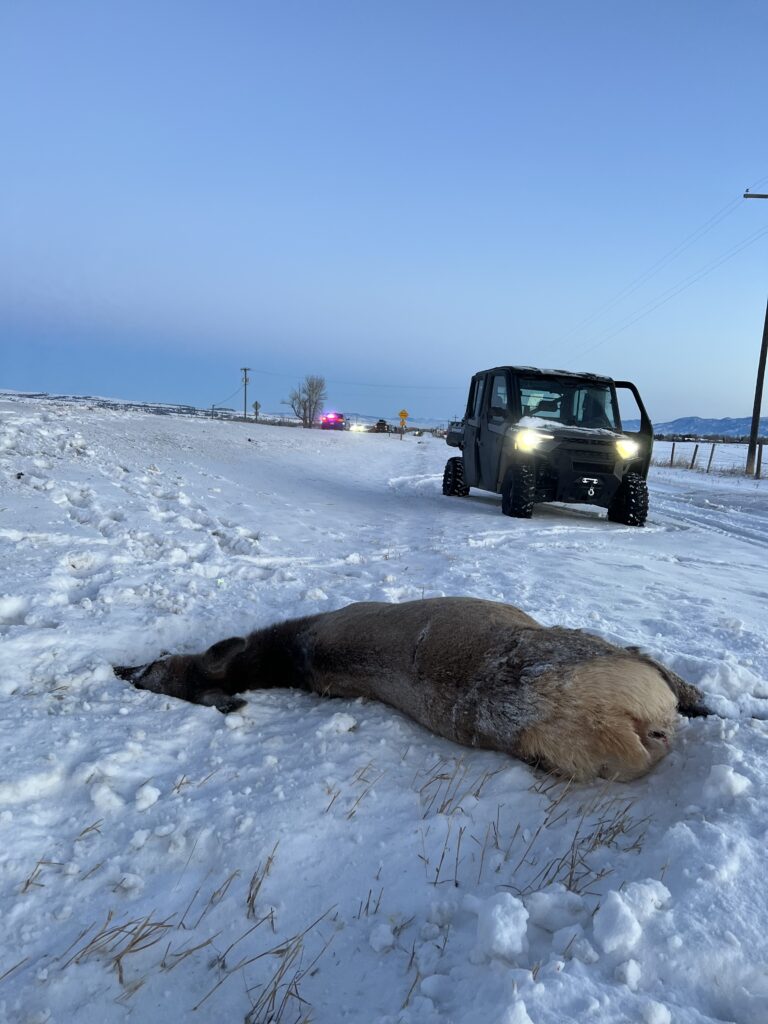
“We’ve got decades of data now from all over North America to say yes, wildlife do use [crossing structures],” Fairbank said. She emphasized the need for research to determine the right places for crossing structures—using carcass data or wildlife movement data to pin-point the most effective and long-term places for animals to cross.
So what’s the next step for a wildlife crossing bridge in Gallatin County? The Buffalo Field Campaign created a petition that aims to get Secretary of the Interior Deb Haaland, Yellowstone Superintendent Cam Sholly and Custer Gallatin National Forest Supervisor Mary Erickson to earmark transportation funding dollars for a “buffalo bridge” over 191. The CLLC and the Western Transportation Institute is wrapping up a final report to be released early this year detailing an assessment of Highway 191 between West Yellowstone and Four Corners. But don’t expect a new wildlife bridge to be put up quickly.
“In a perfect scenario, if you were talking about a project with public land on either side of the highway, or where there are already conservation easements in place, most transportation planning in Montana is on a five-year cycle. It doesn’t happen quick, especially with these bigger structural investments,” Fairbank said.
But a crossing structure alone isn’t enough to preserve the landscape connectivity necessary for a healthy and mobile ecosystem in the Gallatin Valley. Experts have pointed out that without public land or strong conservation easements on either side of a wildlife project, a project isn’t likely to be effective for animals or gain the political support needed to get built.
From Holly Pippel’s perspective, there’s smaller initiatives landowners in the Gallatin Valley can take to improve the mobility of wildlife. When that fence went up on a parcel that used to be an important corridor for the Gallatin Gateway herd, she got in touch with the landowner, asking if a rail could be dropped to make it easier for elk to cross. No dice. When the property was sold, she contacted the real estate agent, and relayed a question to the new owners if they might consider lowering a portion of the fence. No response.
What’s it like talking to landowners who won’t budge?
“It’s just senseless,” Pippel said.
“If my pictures and observations can help some of these new people be a little more friendly that would make my day. But it’s private property rights, so you can’t force people to do things. You can only try to make them feel compelled or passionate or make them slow down and stop to really see what’s going on,” Pippel said. “Only a couple changes can make a big difference. Lowering that fence could make a lot of difference.”









